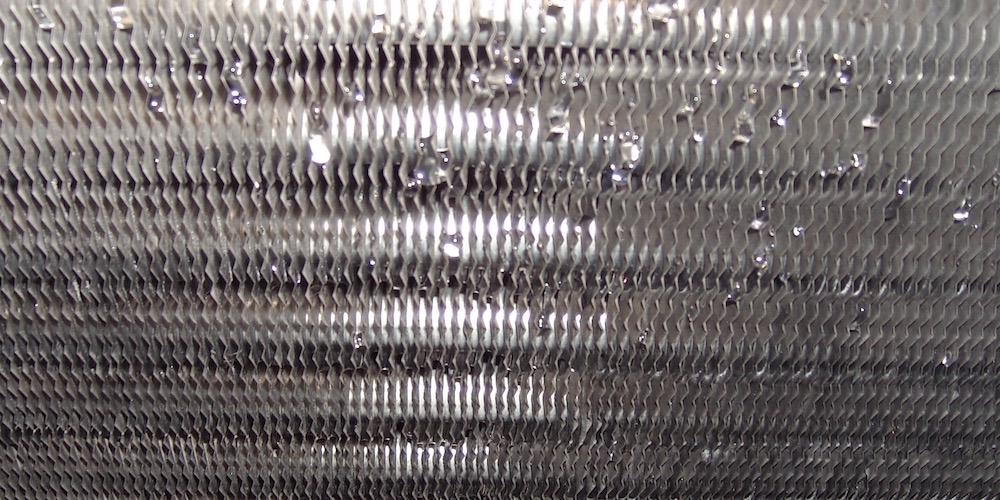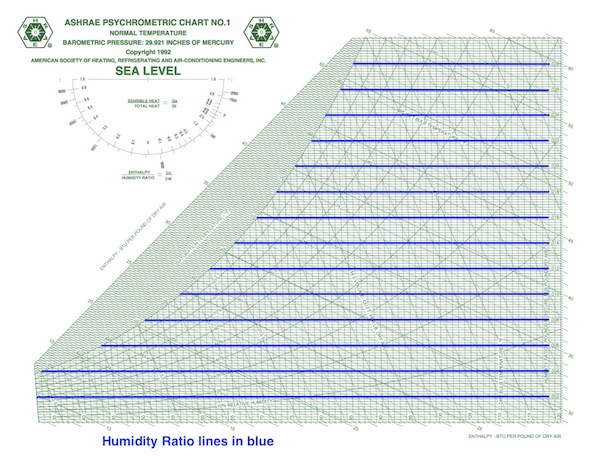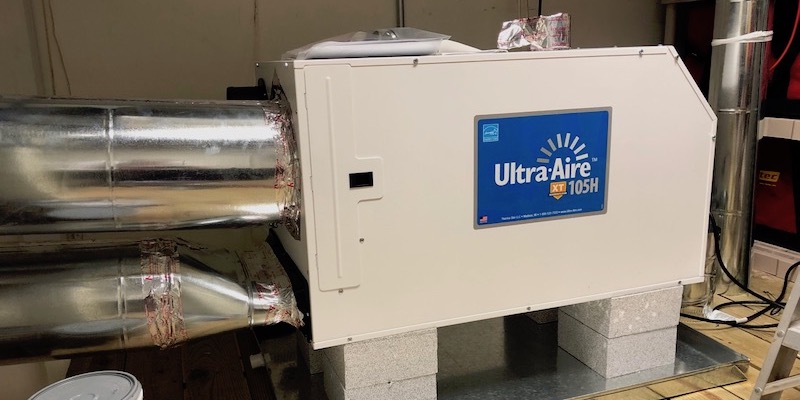Building Science Term of the Week: Grains of Water

Every area of building science has its jargon. And I’m not just talking about the acronyms, initials, and abbreviations that get thrown around casually. I’ve been making a list of the most interesting, useful, or stupefying BS terms and giving short explanations in this new feature of the Energy Vanguard Blog: Building Science Term of the Week. Today’s BS term is “grains of water.” Do you know what field of building science uses it? (Yes, it is still used!)
Definition and history
First, the definition. A grain of water is one seven thousandth of a pound. An easier way to say that is that it takes 7,000 grains of water to make one pound. Why, you’re probably asking, is the mass* of water measured in something called grains? Because it’s just a unit that applies to anything that has mass.
According to Wikipedia, “It is nominally based upon the mass of a single ideal seed of a cereal.” The average weight of grains of wheat and barley formed the basis of the Western world’s way of measuring weight until the Renaissance. If you’d like to know more about this history, you can find it on Wikipedia’s page on the grain as a unit of weight.
Application to building science
The reason this term interests us in the world of building science is because it’s used, at least here in the US and our antiquated system of units, in psychrometrics. The psychrometric chart (below) was once a standard tool used by HVAC designers to understand the properties of moist air. Now most people do the actual calculations with the aid of computers or smartphone apps, so the chart has become more of an educational tool.
The vertical axis on the right is humidity ratio (sometimes called absolute humidity). It can be measured in grains of water vapor per pound of dry air. (As RoyC points out in the comments, the ASHRAE psychrometric chart shown here uses pounds of water vapor per pound of dry air.) The highlighted blue lines in the chart show different humidity ratios. As you move up in the chart, the air has more grains per pound of water vapor.

You may be thinking this is pretty dry stuff and are wondering if there’s anything of interest here, and yes, there is. The main part of the building science world that uses grains as a unit is the dehumidification crowd. When you dehumidify air, you remove water vapor from it. As a result, the weight of water in the air will decrease.

Finally, let’s clear up the abbreviated units you’ll hear when you talk to dehumidifier geeks. The actual unit is grains of water vapor per pound of dry air. What you’ll hear from the dehu geeks, though, will be grains per pound or even just grains. Even when they use the shortened terms, they’re still referring to the full thing: grains of water vapor per pound of dry air.
Now that you’ve got another building science term of the week under your belt and know all about grains, you may want to go further. You may be ready to jump from a small fraction of a pound and all the way to tons.
* You may recall from a physics class that weight and mass are two different quantities. Mass doesn’t change when you move an object to different places, but weight can change because it depends on the strength of the gravitational force. The pound is a unit of weight, so it gets a bit confusing here. Whether we define the grain in terms of pounds, grams, or slugs, just remember that the grain is strictly defined as a unit of mass. (Hat tip to Bob Hale for correcting me on this.)
Allison Bailes of Atlanta, Georgia, is a speaker, writer, building science consultant, and founder of Energy Vanguard. He is also the author of the Energy Vanguard Blog and is writing a book. You can follow him on Twitter at @EnergyVanguard.
Related Articles
Building Science Word of the Day: Interstitial
Why Is Air Conditioner Capacity Measured in Tons?
Psychrometrics – Impenetrable Chart or Path to Understanding?
NOTE: Comments are moderated. Your comment will not appear below until approved.
This Post Has 7 Comments
Comments are closed.

As a long time member of ASHRAE and a former chair of TC1.1 (Thermodynamics and Psychrometrics), I have to correct you about the ASHRAE Psych Chart that you discussed. The vertical axis is not grains of water per pound of dry air. It is pounds of water per pound of dry air. I have ASHRAE Psych Charts going back to 1963 and have never seen one with grains/pound. I do admit that a lot of company psych charts do use grains/pound, but ASHRAE dropped that long ago.
Thanks, Roy. I was using the ASHRAE psych chart simply as a visual example, but I guess it’s good to point out that little detail. I’ve added a note to the article about your correction.
Strictly speaking, a grain is a unit of mass, rather than weight. It is equal to exactly 64.79891 milligrams.
Best, Bob.
Bob, yes, you’re correct, of course. I was sloppy in not clarifying that detail. In my days of teaching physics, I would have deducted points from my students for such sloppiness. I’ve corrected the article.
Your correction says, “The pound is a unit of weight, so it gets a bit confusing here.”
Actually, you could have convinced me, but that statement doesn’t fit with “Whether we define the grain in terms of pounds, grams, or slugs, just remember that the grain is strictly defined as a unit of mass.”
So – Wikipedia:
https://en.wikipedia.org/wiki/Mass_versus_weight
“Similarly, the avoirdupois pound, used in both the Imperial system and U.S. customary units, is a unit of mass, and its related unit of force is the pound-force.”
Thanks for getting me to clear that up…
Would love to see an article on combining HRV/ERV with Dehumidifiers. Messana does this with their ATU and NDP units, and Build Equinox does this with their CERV2 units. But then again, I like the work of Robert Bean on Comfort Controls and Radiant Heating/Cooling. Probably my Chem Eng. training.
Need to figure out how to convert Grains into Moles…..
If we define our physical system as the Earth and its atmosphere for the purposes of BS, why would we worry about mass vs. weight (other than using the correct units)? Oh, I know why! In the currently very lively spirit of space exploration, we could be designing HVAC systems for a base on Mars.